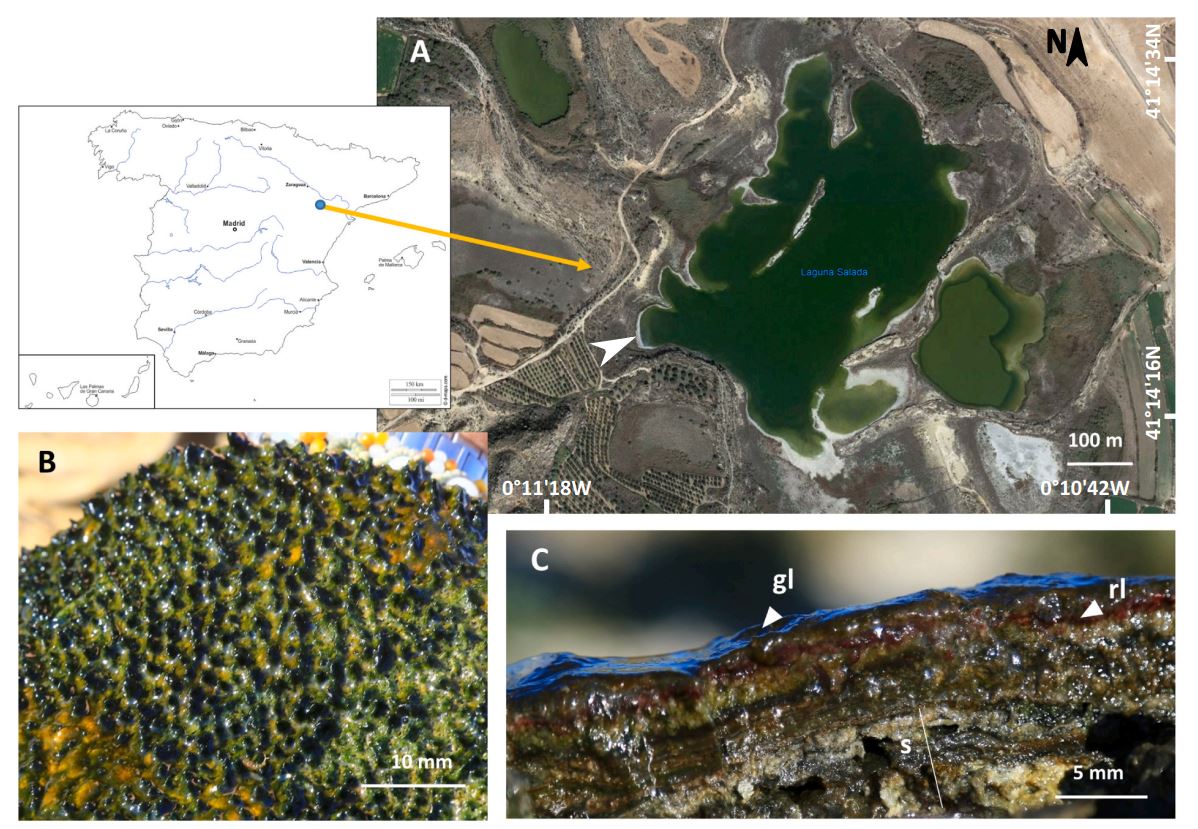Investigation
Soft tissue histology of insect larvae decayed in laboratory experiments using microbial mats: Taphonomic comparison with Cretaceous fossil insects from the exceptionally preserved biota of Araripe, Brazil
Miguel Iniesto, Paula Gutierrez-Silva, Jaime J. Dias, Ismar S. Carvalho, Angela D. Buscalioni, Ana Isabel Lopez-Archilla
Experimental taphonomy using microbial mats offers new insights into the mechanisms involved in the decay of organisms and their preservation as fossils. In this paper, the experimental decay products of soft-bodied insect larvae (the greater wax moth, Galleria mellonella, and the mealworm, Tenebrio molitor) in microbial mats have been described and compared with those of grylloid fossils derived from the Cretaceous Crato Formation of Brazil. This novel approach characterises the decay and mineralisation of different tissues (cuticle, gut tract, silk gland, trachea, and fat body tissues) using transverse histological sections. Multivariate seriation statistics using histology indicate a significant non-random process, in which the two species show the same general decay sequence, namely: decay of fat bodies and muscles on Day 11, digestive degradation and occurrence of endogenous bacteria on approximately Day 30, and degradation of cuticles and tracheal networks (the most perdurable) on Days 60 and 120, respectively. Principal component analysis, based on the qualitative features of the decaying state of tissues, showed that the greatest alterations occurred between Days 60 and 180 in the controls without mats; however, in the microbial mat experiments, larvae showed better preservation overall. Based on scanning electron microscopy and energy-dispersive X-ray spectroscopy, mineralisation of the larvae extends outside the cuticle and inner tissues. The predominance of certain anions (sulfate, chloride, and phosphate) is associated with the microbial activity of the mat community and the composition of water. The organic mesh of exopolymeric substances and cyanobacteria enriched in elements (e.g., Na and Mg) formed an amorphous crust that covered the larval body. This crust is similar to the massive crystallised external film found on the grylloid fossils derived from the Crato Formation of Brazil. The minerals were found to vary with location and time, with sulfates appearing mostly internally and for longer periods. Sulfurisation is discussed as the principal preservation process and is rapid in the early stages of organic matter decay. This comparison between the outcomesproduced by taphonomic experiments using actual microbial mats and exceptionally preserved fossils can provide valuable information to understand more about the formation of numerous Konservat-Lagerst¨ atten.
Soft tissue histology of insect larvae decayed in laboratory experiments using microbial mats: Taphonomic comparison with Cretaceous fossil insects from the exceptionally preserved biota of Araripe, Brazil
